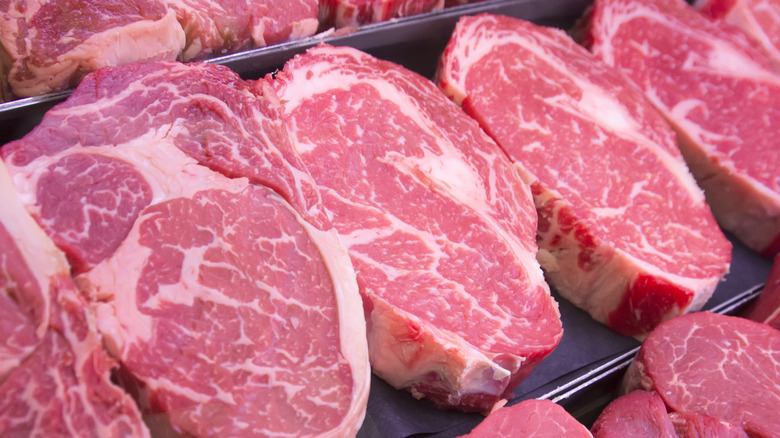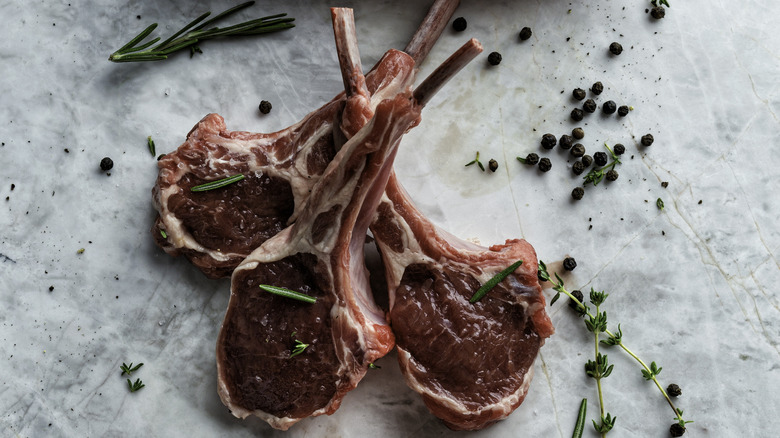Why You Should Think Twice Before Buying Bright Red Cuts Of Meat
Sight plays an enormous role in our perception of food. The color of food actually activates our taste buds and begins our perception of how the food is going to taste. But sight can be misleading. Just because something looks colorful doesn't indicate whether or not it actually tastes good. Nowhere is this truer than with red meat.
It may be appealing to the eye to look at bright red cuts of meat, but you should think twice before buying. Meat that is bright red in color is very often sourced from younger animals that were freshly slaughtered. And while this freshness may seem ideal, it doesn't necessarily indicate flavor or quality. See, the meat of a younger animal has not developed enough muscle or fat to yield much in the way of flavor.
So, what exactly are you looking for in red meat if not a bright red color palate? Well, as it turns out, the darker the red meat, the more flavorful it is. Obviously, this rule has its limits. Generally speaking, however, meat that's a little darker is often more tender and flavorful.
What color should you look for?
Red meat will naturally change color the moment it is processed and begins to absorb oxygen. This is called oxidation, and it happens in everything from wine to apples to poultry. With red meat, however, the color change is very prominent. You can go from the vibrant red colors to darker reds and purples. These latter colors are usually indicative of meat that has been cut from an older animal, one whose muscular structure is better developed and contains more fat. These factors lead to more flavor and a typically tender texture. A quick look at some meat should be able to indicate its age, but if you're unsure ask the butcher or meat counter attendant.
A little oxidation is not going to do any harm in terms of flavor, but it will also help you to indicate which cuts of meat have gone bad. If you've bought ground beef or some steaks and are keeping them in the refrigerator, they should keep for at least 35 days if they have been vacuum sealed. However, if the meat is beginning to turn brown or gray and is putting off an unusual odor, it has begun to spoil.
So, aiming for that deep red and darker purple is the way to go. It's going to get you the best bang for your buck in terms of quality, flavor, and texture.

